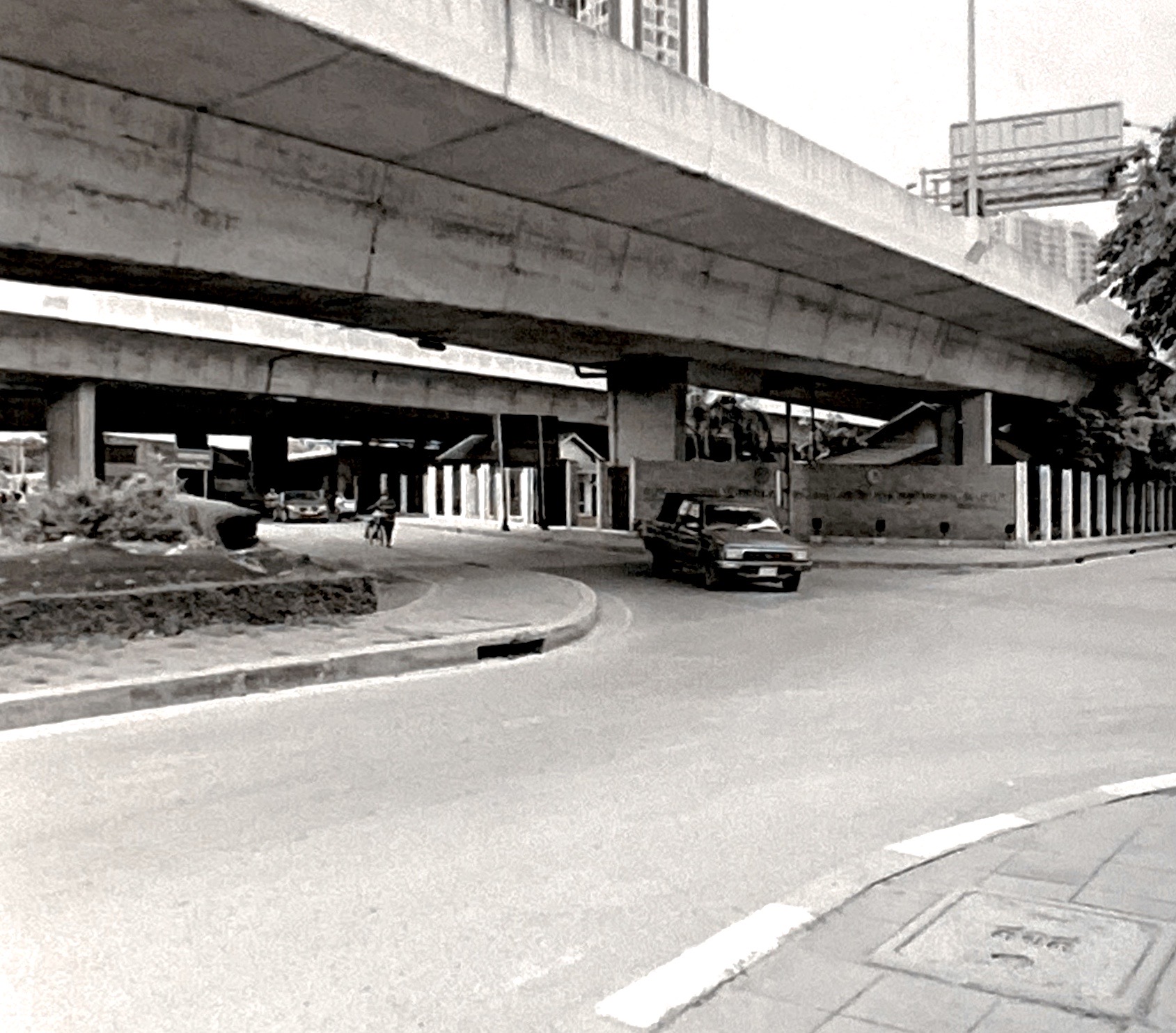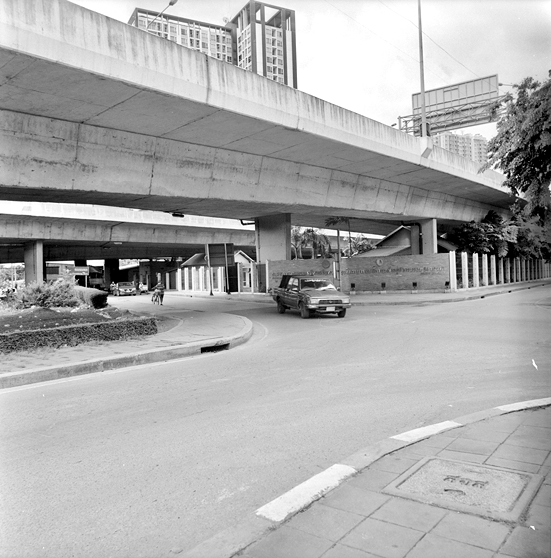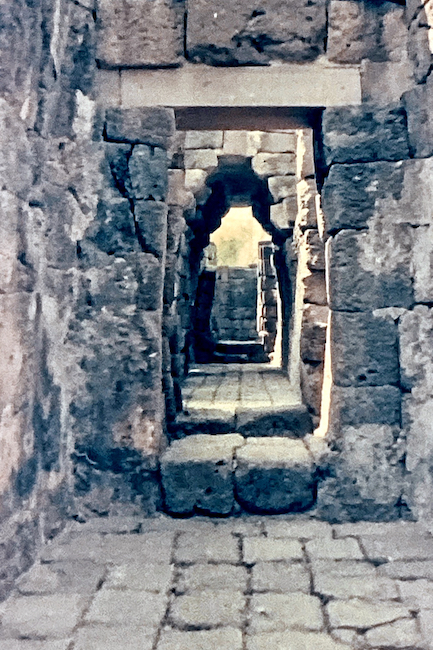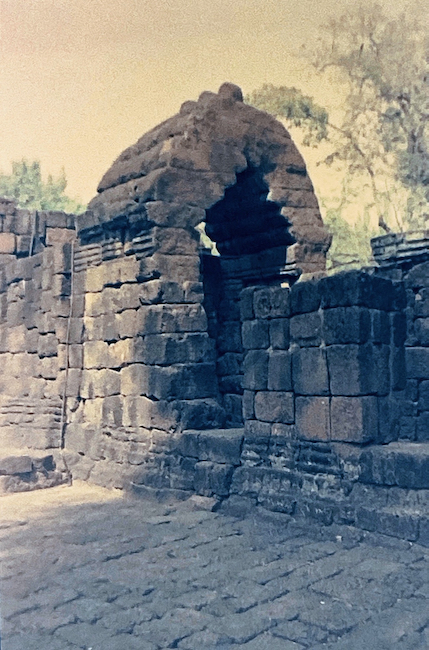FilmBox: Scanning Negatives on iPhones
By Graham K. Rogers
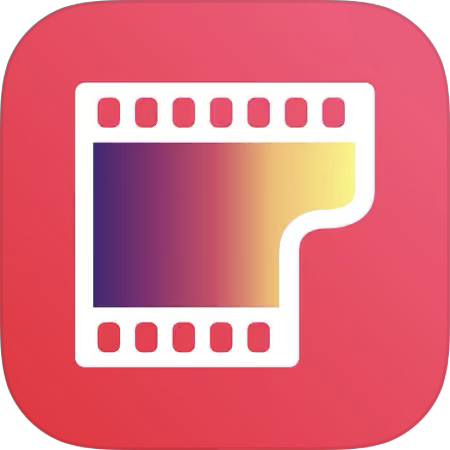
Anyone who works with film these days either has a flatbed scanner, or makes use of services where the film is developed. There are also specialist printing shops with high end scanners. Those who are new to film or who find old negatives can scan them with the smartphone. FilmBox does a fairly good job and has options for fees, with a 3-day tryout to see if it is useful.
Film photography takes up a fair part of what I do these days. I am not professional, although one or two of my digital images have appeared in print and online. With film I enjoy the processes involved separate from the work with the camera. I work mainly with medium format film although I do have a couple of 35mm cameras. I do not develop my negatives for a number of reasons, particularly space, and climate: water needs to be at a certain purity, and temperatures should remain around 26 degrees C. Instead I scan negatives and then edit the output, trying to change the digital image to what I first imagined when I pressed the shutter button.
Not long after I found my first medium format camera, I bought a flatbed scanner. While the best results might come from a drum scanner, these are prohibitively expensive (thousands of dollars). Two flatbed scanners were suggested: the Epson V800/850, and the Canon 9000F, Mk II. I chose the latter which I picked up in central Bangkok for about 10,000 baht about 5 years ago. It came with software on a disk, but I eschewed this in favor of VueScan, which has a slightly dated interface but does the job well.
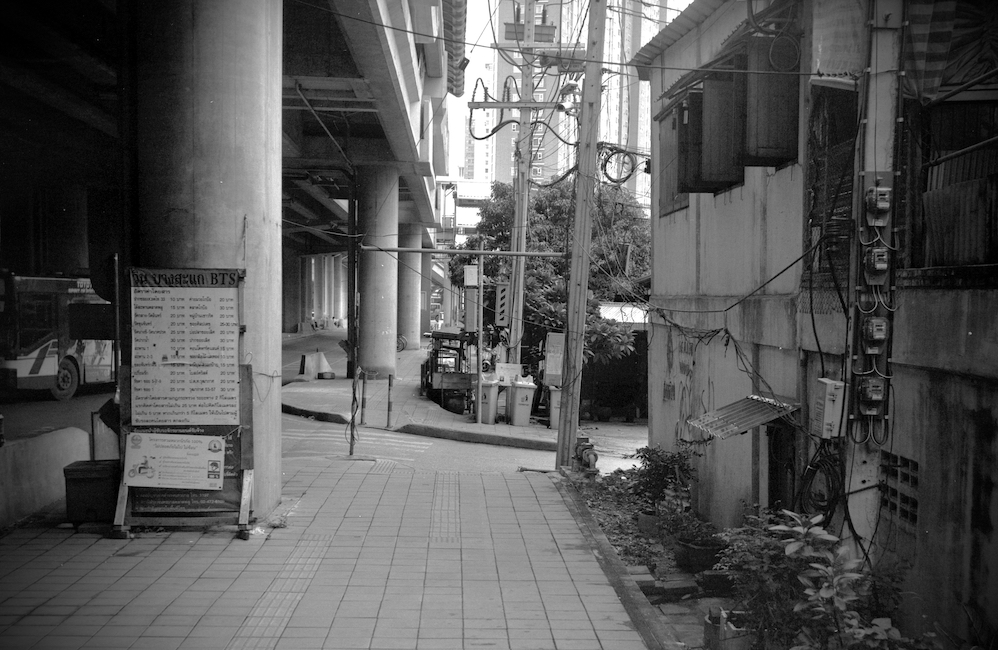
120 film from Agfa Record III scanned with Canon 9000F
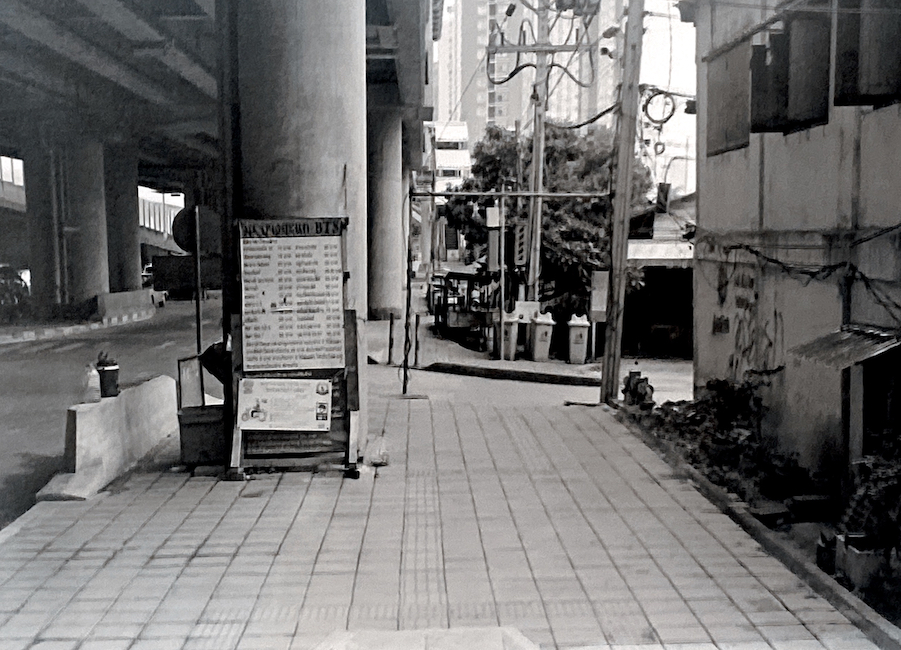
Film from Agfa Record III scanned with FilmBox
I have been aware for a while that it is possible to scan film using the iPhone although wondered about the output quality. I was interested to see the app Filmbox mentioned online. I downloaded this as it specifically mentions negatives and shows black and white in its promotional images although these are clearly 35mm film. The app can be used free for a trial period, with a monthly subscription plan or a one-off payment. Although it is clearly aimed at users of 35mm film, I had a look at how it worked with 120 film.
The size of medium format film these days is about 61mm or 2.4". It is called 120 as this is Kodak's numbering system (220 film is the same 61mm width, but the rolls are twice the length.)
6 x 6 film from Hasselblad scanned with FilmBox (left) and Canon 9000F
As with the scanner, a light source behind the negative is needed (the light for a print is in front of the image). I used a blank browser page on a MacBook Pro initially. The in-app instructions suggested that the user avoid placing negatives too close to the screen: "holding the negative about 2" away". This is to avoid a pixelated effect on the scans. Instructions also say that the camera screen must include the slide holes. As medium format film does not have these, I had to make some changes to the approach. I also use black and white film almost exclusively.
Prasat Muang Singh - 35mm film scanned with FilmBox
Medium format is larger than 35mm (obviously) and with its area tends to bend more easily, while in some cases the negative may curve slightly. This depends on the plastic base and the processing. As the negative I was using was curving more than was useful, it was not possible to hold it 2" from the screen and expect good output. Despite the instructions, I put it against the computer screen and adjusted the iPhone so the film would fit within the onscreen guide.
Once it seems stable, the photo button is held for 3 seconds. There is also a voice-activated option. This works better than the 3-second button hold which may allow shaking, but it did not work every time for me. When it does, it is much better. I tried a browser page on my MacBook Pro with its slanted screen initially, but had better results - especially with regard to physically handling the negatives and phone together - when I tried a white screen on the iPad Pro. I laid this flat and treated it like a mini light table.
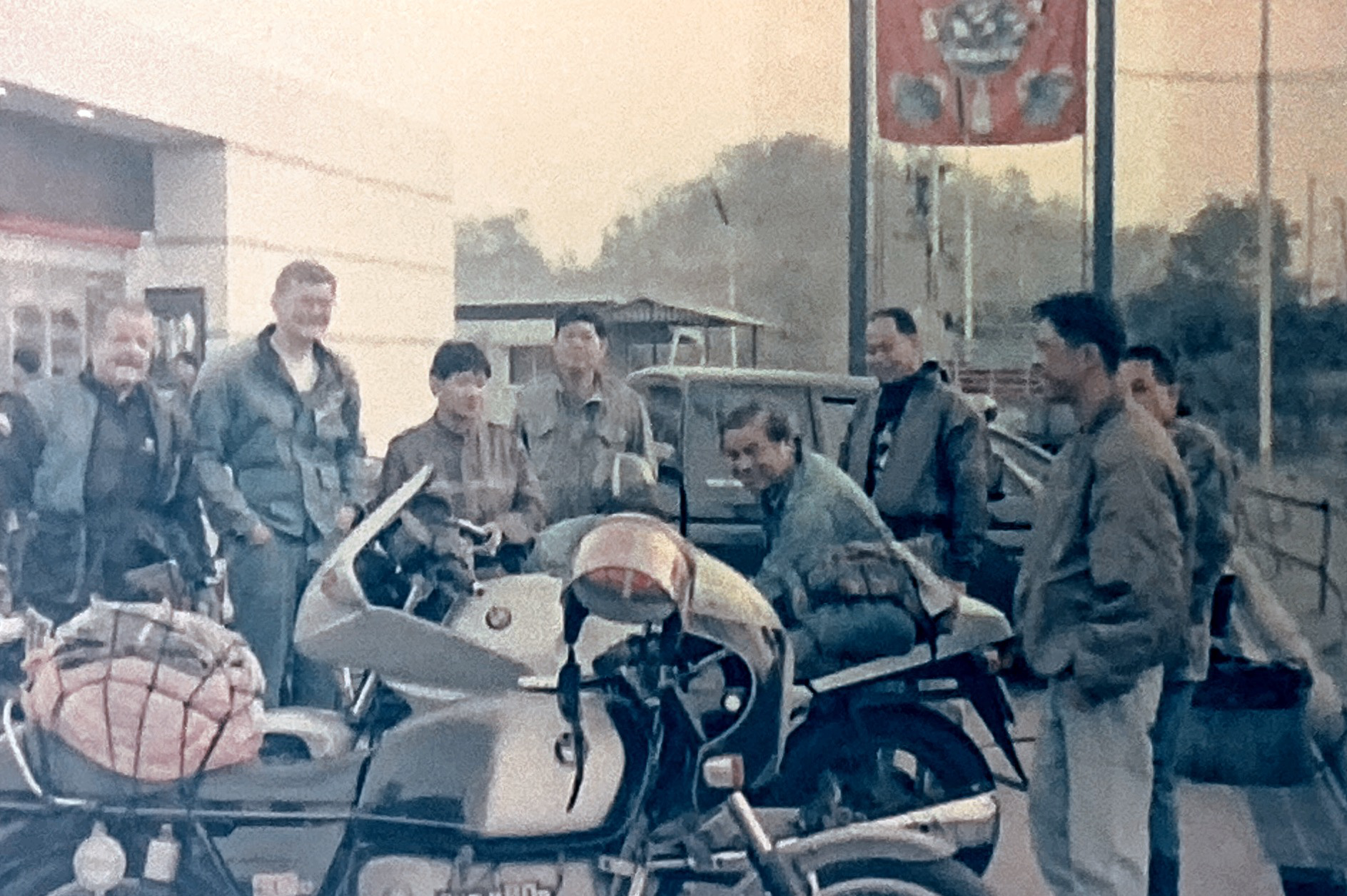
Early morning ride out - 35mm film scanned with FilmBox
The app does its processing, the screen is cropped, then the image is reversed so instead of a negative there is a corrected image. Despite some curving at the bottom edge of the film as I was holding it, the app compensated for that and the finished output was clear and sharp, with a slight silvery tint to it. The image was saved in Photos as a JPG file 2750 x 1892 with a size of 891 KB which gives an image of 36" x 24". It would be quite acceptable for online use, say with Instagram.
The image scanned using the Canon is a little different at 8148 x 5165, TIFF of 46.3 MB, with an image size of 8 x 5 at a resolution of 1022 pixels/inch. At 72 pixels/inch that would give an image of 113.5 x 71, although a better print image would be 40" x 25 at 200 pixels/inch. The scanner output is always going to be better, but that is not the real point here. An app like this might be useful when away from usual resources so that the image can be viewed and judged effectively in limited circumstances. It could also save me the effort of bringing the scanner out from its storage space if I just want a quick look.
For those using 35mm film, who are the targeted user group, there is a use for this app, but it is limited as most shops that develop film these days would also scan the negatives for a fee. I prefer 120 film over 35mm partly because when scanning I find the smaller film so fiddly to handle. This provides a quick way for me at least to gauge the value of output, perhaps allowing me to save time: only scanning the best of the images, rather than the whole roll.
As I have just moved, all the old negatives are in one box, so I was able to find a selection of 35mm films, although most of these date back to the 1990s and may not have been stored in optimum conditions. The medium format negatives are current. I ran the process on a couple of the 35mm color strips, noting that it is really only practical to work on one frame at a time. This is not a surprise with Medium format film, but it slowed me down when using 35mm. Bearing in mind that these negatives were around 30 years old, the couple of examples I scanned with FilmBox were quite acceptable. In some cases it might be worthwhile rescanning to produce the best output.
The app will score when someone finds a box of old negatives left in an attic somewhere. It would be handy to see if there were any usable images (and what the content is) before taking the process further. There may also be that one photograph that has been kept along with its negative, that could be refreshed and used online.
The app itself is limited in terms of output, especially compared with a scanner, either one already owned or a service by a photo-developing shop. I am also not convinced by the price structure: a monthly payment of 179 baht ($5.73) or a 5-year plan for 599 baht ($19.19). My Canon scanner is available online for around 7,500 baht nowadays.
Graham K. Rogers teaches at the Faculty of Engineering, Mahidol University in Thailand. He wrote in the Bangkok Post, Database supplement on IT subjects. For the last seven years of Database he wrote a column on Apple and Macs. After 3 years writing a column in the Life supplement, he is now no longer associated with the Bangkok Post. He can be followed on Twitter (@extensions_th)
|




